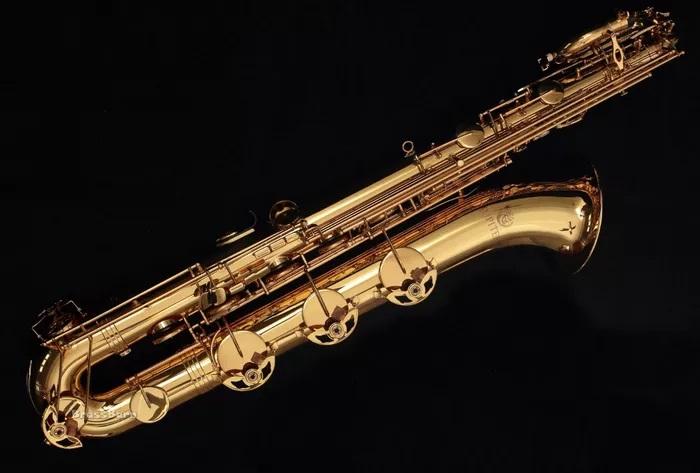What Is a Baritone Saxophone Used For? Key Roles & Genres

The baritone saxophone is one of the largest and deepest sounding members of the saxophone family. Known for its rich, robust tone and wide range, it occupies a special place in many musical styles. But what exactly is a baritone saxophone used for? In this comprehensive article, we explore the many roles this instrument plays, its significance in different music genres, and why musicians treasure its unique voice.
The Baritone Saxophone: An Overview
The baritone saxophone is a low-pitched saxophone in the key of E♭. It’s larger than the alto and tenor saxophones and produces a deep, resonant sound that provides harmonic and rhythmic support within ensembles. The instrument’s size and tonal qualities give it a distinct personality, making it invaluable in various musical settings.
Historical Context and Evolution
Since its invention by Adolphe Sax in the 1840s, the baritone saxophone has been a staple in wind bands and orchestras. Over time, its use expanded into jazz, popular music, and beyond. The evolution of the baritone saxophone’s role reflects changes in musical tastes and ensemble needs, showcasing its versatility and enduring appeal.
Primary Uses of the Baritone Saxophone
1. Providing Bass Support in Ensembles
One of the baritone saxophone’s fundamental uses is to provide bass and lower midrange support in bands and orchestras. Its deep, rich tone anchors the harmonic structure and adds fullness to the overall sound. In big bands and jazz orchestras, the baritone sax often doubles the bass lines or complements the rhythm section.
2. Soloing and Melodic Lines
Although often playing a supporting role, the baritone saxophone is also a powerful solo instrument. Its expressive range allows players to deliver warm, soulful melodies or fast, agile runs. Many renowned jazz soloists have brought the baritone saxophone to the forefront, demonstrating its potential beyond accompaniment.
3. Enhancing Rhythm and Groove
In genres like funk, soul, and R&B, the baritone saxophone contributes to the rhythmic drive. Its punchy, percussive sound can lock in with drums and bass, creating grooves that are both compelling and danceable. This role emphasizes the instrument’s versatility in both harmonic and rhythmic contexts.
The Baritone Saxophone in Different Music Genres
Jazz and Big Band Music
In jazz, the baritone saxophone is a cornerstone of the sax section in big bands. It anchors the saxophone choir with its low tones, balancing the higher-pitched alto and tenor saxophones. Legendary players like Gerry Mulligan and Pepper Adams elevated the baritone saxophone as a solo voice, pushing the instrument’s boundaries with complex improvisations and innovative techniques.
Classical and Wind Ensemble Use
Although less common than in jazz, the baritone saxophone is used in classical music and wind ensembles. Composers write parts that exploit its broad tonal range, from soft, lyrical passages to bold, dramatic statements. Its unique timbre adds color and depth to orchestral textures.
Funk, Soul, and R&B
In funk and soul bands, the baritone saxophone is often part of horn sections that deliver tight, rhythmic hits. Its powerful sound adds weight and intensity to horn riffs and hooks. Musicians use the baritone sax to emphasize the groove and energize live performances.
Rock and Popular Music
The baritone saxophone occasionally appears in rock and popular music, adding a distinctive edge or warmth to recordings and live shows. Artists and bands use it to diversify their sound palette, sometimes layering it with guitars and keyboards for fuller arrangements.
Technical and Musical Qualities That Define Its Use
Range and Timbre
The baritone saxophone’s range spans nearly three octaves, starting from a low concert D♭ (written A♭). Its timbre is dark, robust, and sometimes gritty, capable of smooth legato lines or sharp staccato attacks. These characteristics make it ideal for both melodic and rhythmic roles.
Expressive Techniques
Players use various techniques to maximize the baritone saxophone’s expressive potential. Vibrato, growling, altissimo notes, and dynamic contrasts enable nuanced performances. These techniques allow the instrument to adapt to diverse styles, from mellow ballads to aggressive funk solos.
Physical Considerations
Due to its size and weight, the baritone saxophone requires physical endurance and good posture to play effectively. This aspect influences its use mostly in stationary settings like concert stages and studios, although many performers have adapted to use it in energetic live contexts as well.
The Baritone Saxophone in Modern Music Production
Studio Recording Applications
Producers and arrangers use the baritone saxophone in studio recordings to add depth and texture. Its tone can fill the lower sonic spectrum without overpowering other instruments, making it a valuable tool in layered arrangements. The instrument is frequently featured in horn sections or as a solo voice in contemporary tracks.
Electronic Music and Fusion
In fusion and electronic music, the baritone saxophone can be processed with effects to create new soundscapes. Its natural warmth combined with digital manipulation results in unique blends, bridging traditional and modern sonic worlds.
Famous Baritone Saxophonists and Their Impact
Throughout music history, several baritone saxophonists have shaped the instrument’s role and expanded its possibilities. Players like Gerry Mulligan, Harry Carney, Pepper Adams, and Cecil Payne have become synonymous with the baritone saxophone, inspiring generations of musicians.
Conclusion
The baritone saxophone is a versatile and powerful instrument used for bass support, solo melodies, rhythmic grooves, and textural color across many musical styles. Whether in a jazz big band, a funk horn section, a classical wind ensemble, or a studio recording, the baritone saxophone adds a distinct voice that enriches and anchors music.
- Art
- Causes
- Crafts
- Dance
- Drinks
- Film
- Fitness
- Food
- Juegos
- Gardening
- Health
- Inicio
- Literature
- Music
- Networking
- Otro
- Party
- Religion
- Shopping
- Sports
- Theater
- Wellness


